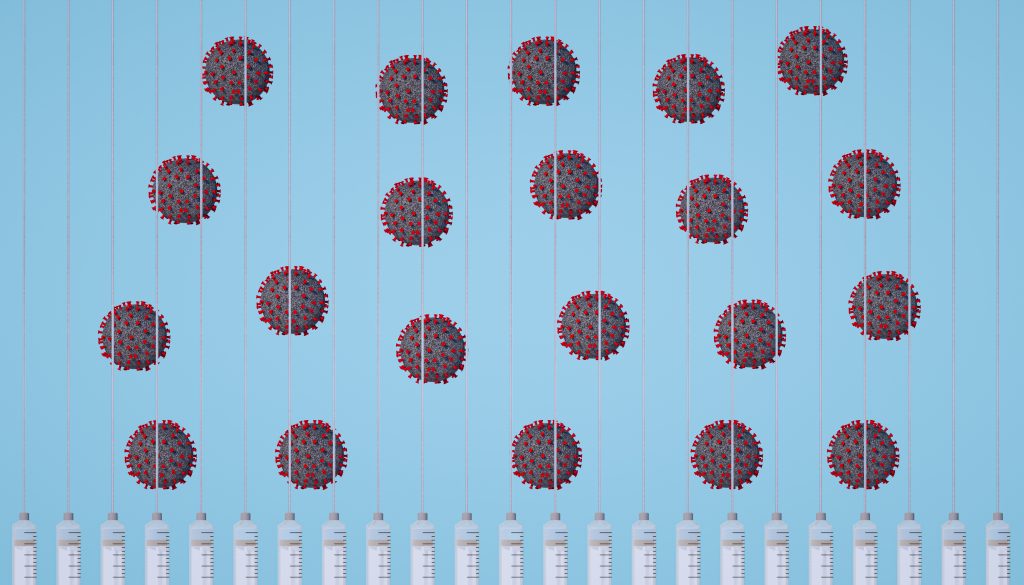Lessons in Public Health Collaboration from Washington State’s Prison Outbreaks

Outbreaks in correctional settings are complex and resource intensive because pathogens, especially respiratory ones, can spread quickly in these often crowded and poorly ventilated spaces. Incarcerated individuals often have a higher prevalence of underlying health conditions compared to the general public, which puts those living in these settings at an increased risk for severe health outcomes. In a recently published article in the Emerging Infectious Diseases winter supplement, Sixtine Gurrey, a University of Washington Epidemiology PhD student who is a Correctional Health Epidemiologist for the Washington State Department of Health (WA DOH), gives insight into how the state public health agency worked together with the Department of Corrections (WA DOC) during the COVID-19 pandemic and a multifacility tuberculosis (TB) outbreak.
The WA DOC and WA DOH have a history of working together to respond to communicable disease outbreaks in Washington State correctional facilities. However, different teams from WA DOH would typically respond depending on the pathogen, and public health teams often face a learning curve to understand the intricacies of prison logistics and the transmission dynamics specific to these complex settings. “Public health infectious disease programs are disease-specific,” Gurrey says. “But this structure doesn’t acknowledge that pathogens don’t operate in siloes and that they thrive in environments like a prison. The disease focus leaves us unprepared to respond to aspects of a prison that make the usual approach to infection control infeasible.”
The impacts of large TB and COVID-19 outbreaks and limited public health guidance specific to correctional facilities required more coordination between the prison clinical teams within WA DOC and the responding public health teams to figure out how get the pathogens under control.
During the COVID-19 pandemic, WA DOH established its first setting-specific Non-healthcare Congregate Settings Outbreak Response team, which included Gurrey as the corrections epidemiologist. Together with Dr. James Miller, a clinician from WA DOH, Gurrey led frequent coordination meetings which pulled together WA DOH epidemiologists and COVID-19 teams, WA DOC clinicians, as well as WA DOC custody and operations teams. These meetings provided a space to discuss infection prevention protocols and resource allocation for testing, isolation, and health education. This same model was adapted for the tuberculosis outbreak the following year, leveraging the Non-healthcare Congregate Settings Outbreak Response team’s deep understanding of prison dynamics and relationships with corrections staff to replicate their earlier success.
In a prison setting, the same guidelines to isolate, distance, and test after exposure to a respiratory pathogen do not apply as they would with the general population. People might refuse testing or treatment, and isolation processes are difficult to adhere to, due to lack of dedicated space. To address the challenge of developing corrections-specific public health guidance, both WA DOH and WA DOC relied on the Centers for Disease Control and Prevention (CDC) guidance as a framework for their outbreak response and worked closely with CDC subject matter experts to identify facility-specific solutions based on the prison’s available resources, physical layout, and operation constraints. WA DOH and WA DOC implemented location-based contact tracing and adopted a non-coercive approach toward residents by providing incentives to testing and treatment. Having specific guidance for correctional facilities worked to address unique needs, while also educating staff and residents, and preventing the spread of misinformation.
The scale of the TB and COVID-19 outbreaks made it impossible to rely on sharing data over the phone or by fax. WA DOC needed a way to share case-level data electronically with WA DOH. The team also tackled these technological issues by designating staff to collect and manage COVID-19 and TB data electronically. The effort toward shared databases enhanced transparency and information flow between WA DOH and WA DOC. For Gurrey, the success of these systems underscores the importance of dedicated staff, leadership support, and investment in modern health data systems that enable data sharing between the two agencies
Both agencies came away with important lessons from these two outbreaks. Frequent communication between WA DOH and WA DOC, having public health staff attuned to the challenges of infection prevention and control in correctional settings, having a WA DOC-based team to manage databases for health information until WA DOC acquires an electronic medical record system, and sharing data between agencies were all major assets to a quick and effective response.
“These two outbreaks demonstrate how important it is for public health to work closely with correctional settings,” Gurrey said. “This partnership and support from public health needs to be sustained even after the outbreak is over so we can stay prepared for ongoing emerging public health threats and protect the health of the people living and working in these settings.”
The effects of incarceration extend beyond those who are confined, impacting families, staff, healthcare providers, educators, volunteers, and the community at large. The Emerging Infections Diseases winter supplement highlights the interconnectedness between the health of incarcerated individuals and the broader community, with articles exploring the impact of COVID-19 and other infectious disease outbreaks on incarcerated individuals. As the movement toward caring for the overall health of incarcerated individuals gains momentum, this supplement becomes essential for informing administrators and healthcare providers alike in addressing the health needs of those under their care and custody.